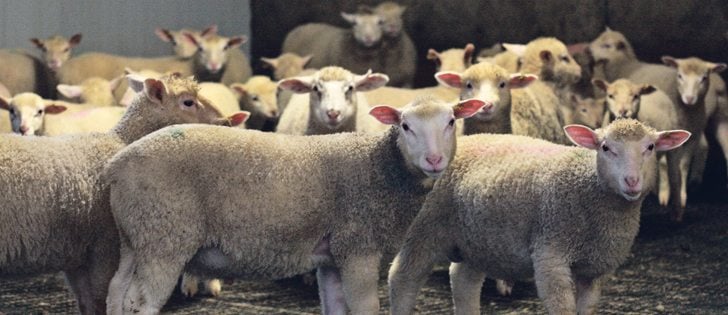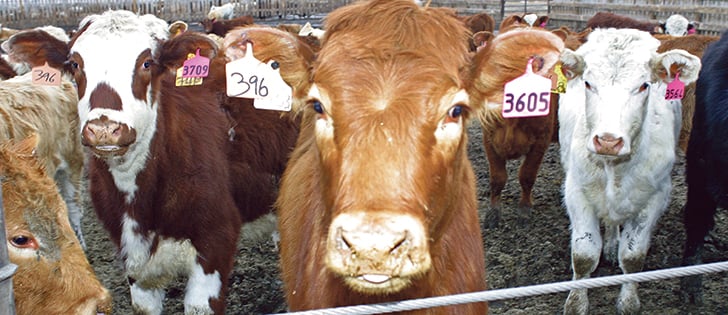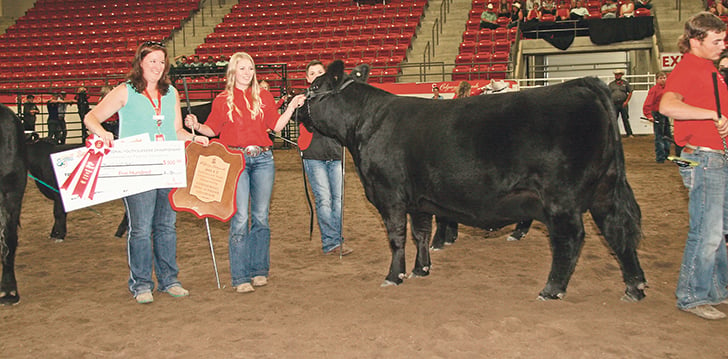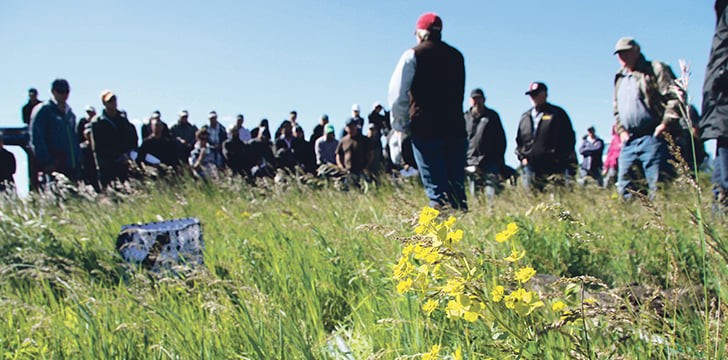LANIGAN, Sask. — If you’re a beef producer who uses multiple bulls to service your herd, then you’ve probably had suspicions that some of your bulls might not be doing their fair share of the work.
That’s one of the reasons why genetic sire verification can be such a valuable tool.
“You have semen tests and you have some other general measures on bull performance, but when you turn your bulls out into a pasture with multiple other bulls, you don’t really know at the end of the day who’s doing their job and who’s not,” said Stacey Domolewski, a post-graduate student from the University of Saskatchewan who is studying sire verification in multi-sire breeding pastures.
Read Also
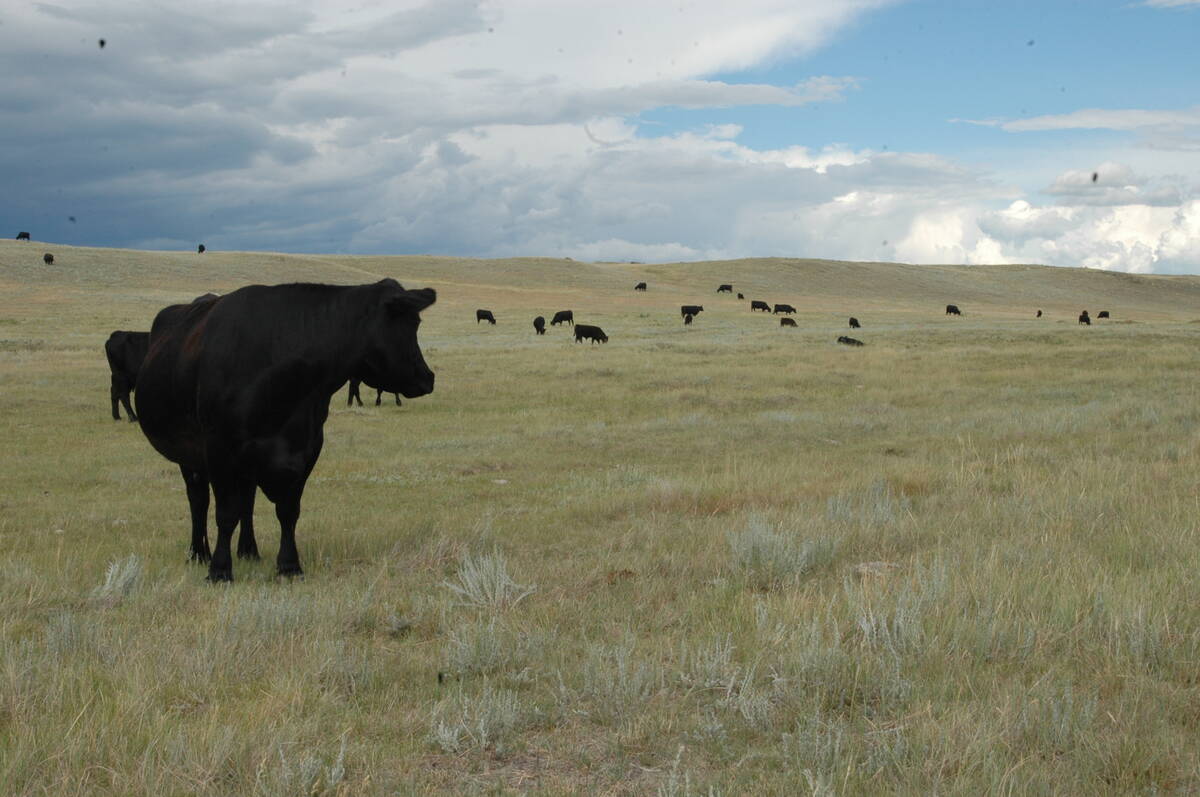
Canadian Food Inspection Agency slammed for handling of bovine tuberculosis case
The federal government leans heavily on producers to “take one for the team” and risk their livelihoods without any reassurance of support.
“But if you can DNA test your calves and determine exactly which sires are actually doing their jobs and which ones aren’t, then there’s a cost saving to you if you can get rid of that bull that’s really just eating your feed … hanging around and not doing its job.”
Domolewski was one of three people who led a discussion on sire verification June 21 at the Western Beef Development Centre’s annual field day near Lanigan.
WBDC is conducting a three-year study into the applications and benefits of sire verification.
Domolewski said genetic tools that confirm a calf’s parentage allow cow-calf producers to make informed culling decisions.
It can also determine which bulls are more likely to produce offspring that have complications during calving and which calves should be kept as replacement heifers based on average daily gain rates, weaning weights and other key measures of animal performance.
In year one of the three-year study, Domolewski and the WBDC worked with six co-operating ranches to evaluate the economic value of using sire verification.
In one multi-bull pasture, the most prolific bull was responsible for siring more than 41 percent of cows in the herd, while the least prolific sired less than four percent.
Domolewski said cow-calf producers sometimes assume that the youngest bulls in a paddock are the least aggressive during breeding and sire the fewest calves.
But that is not always the case, she said.
In some cases, yearlings and two year olds were more active breeders than mature bulls.
Steven James, research director with Quantum Genetix in Sask-atoon, said methods used to verify parentage in beef herds have improved.
Technological improvements have decreased the cost of sire verification and increased the ease of incorporating the information into commercial livestock operations.
“Before 2012, DNA parentage was done using something called micro-satellite markers,” James said.
“Through new technology and just trying to speed things up and make things cheaper, we’ve moved into what we call SNIPs or single nucleotide polymorphisms.”
SNIPs are a faster and less expensive way to examine a calf’s genetic material and match it with a sire.
Producers can easily collect DNA samples that contain the SNIPs from calves during routine processing operations.
DNA samples are collected using collection tags, which can come with numbers that match those on standard Canadian Cattle Identification Agency ear tags.
Tissue samples should be frozen as quickly as possible and can be sent to the lab for DNA analysis at a later date.
DNA samples can be acquired from hairs that are pulled from a bull’s tail. Cells attached to the roots of the hairs allow for accurate analysis of the animal’s DNA.
Quantum has been providing DNA parentage services for several years.
“The reality is that when you put your bulls out in the pasture, you don’t really know what they’re doing (or) which cows they’re breeding,” James said.
“With DNA parentage, you’ll automatically know how many cows each bull has bred and you’ll know which calves they’ve sired.
“These are important factors financially because you’re paying for all of those bulls and you may or may not be getting what you think … in terms of how many calves they produce or the performance traits that they pass on.”
Leanne Thompson of Living Sky Beef near Minton, Sask., was one of the six co-operating cow-calf operators that participated in the WBDC study.
She became interested in the benefits of sire verification because she and her husband were looking for a way to reduce calving problems in heifers.
“At our place we run quite a few heifers in one breeding pasture,” Thompson said.
“They’re supposed to calf on their own with … heifer-friendly bulls, but sometimes you don’t end up with heifer-friendly bulls. (When problems arise), we’d like to pin that on one particular bull.”
Thompson said she has been thinking about other ways to use the technology since joining the study.
DNA parentage can be a beneficial management tool, but it can also present challenges, she said.
For example, the additional record keeping that’s required to link parentage data to existing herd records requires extra time and management.
A good herd management software package can help with data management, but it still takes extra time to enter the data.
Timelines can also be an issue.
Tissue samples that are collected from calves in late spring or early summer must be shipped to the lab for analysis quickly to make use of the data in the next breeding cycle.
Any delays in shipping the samples or receiving lab results could mean that parentage data is not available by the time bulls are being turned out for summer breeding.



